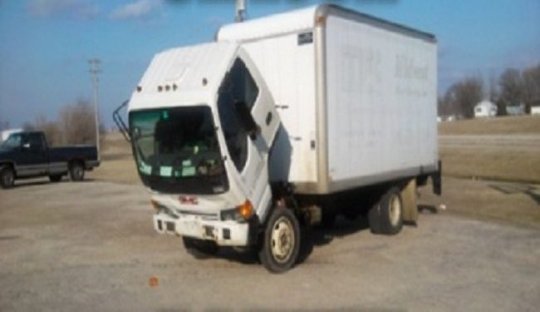#northwest territories
Text
Lawyers for Ron Barlas and the Łutsel K'e Dene First Nation (LKDFN) met by video in a Yellowknife courtroom Tuesday, for a hearing in the alleged fraud case against Barlas.
Legal counsel for the First Nation continues to push the court to settle the lawsuit without a trial. LKDFN has accused Barlas, the suspended CEO of Denesoline, of misappropriating almost $12 million dollars of its money for personal gain.
Lawyers for the First Nation say Barlas needs to be removed from power, contracts torn up and properties liquidated. The only trial they want, lawyers say, is to figure out damages.
"A court does not need a trial to deal with a case as obvious as this one," said Matthew Sammon, the lawyer representing the Łutsel K'e Dene First Nation. "There's oppression at every level of the CEO's functions."
Barlas continues to deny the allegations. Earlier this month, his lawyers argued his defence in the civil suit, saying LKDFN lawyers had massively overstated their case, taken evidence out of context and downplayed exonerating evidence. [...]
Continue Reading.
Tagging: @newsfromstolenland, @vague-humanoid
Notes from the poster @el-shab-hussein: For the record, this lawsuit has been going on for years. Over 14 million $ stolen from this Dene community.
#cdnpoli#Denesoline#Indigenous persecution#Indigenous politics#colonialism#Łutsel K'e Dene Nation#Yellowknife#Northwest Territories
39 notes
·
View notes
Text
i was inspired by my last rb.
#i’m sorry the rest of the world#canada#geography#poll#polls#north america#yukon#northwest territories#nunavut#british columbia#alberta#saskatchewan#manitoba#ontario#québec#newfoundland#newfoundland and labrador#prince edward island#new brunswick#nova scotia#simon says
1K notes
·
View notes
Text
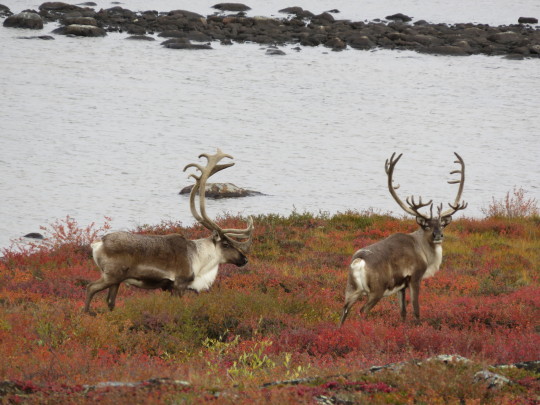
Barren-ground caribou Rangifer arcticus arcticus
Observed by catwin, CC BY-NC
#Rangifer arcticus arcticus#barren-ground caribou#Cervidae#deer#North America#Canada#Northwest Territories
217 notes
·
View notes
Text

Radar station at Tuktoyaktuk, Northwest Territories, Canada, circa 1960. (CCA)
#canada#history#military history#radar#architecture#arctic#nunavut#northwest territories#tuktoyaktuk#cold war#radome
151 notes
·
View notes
Text
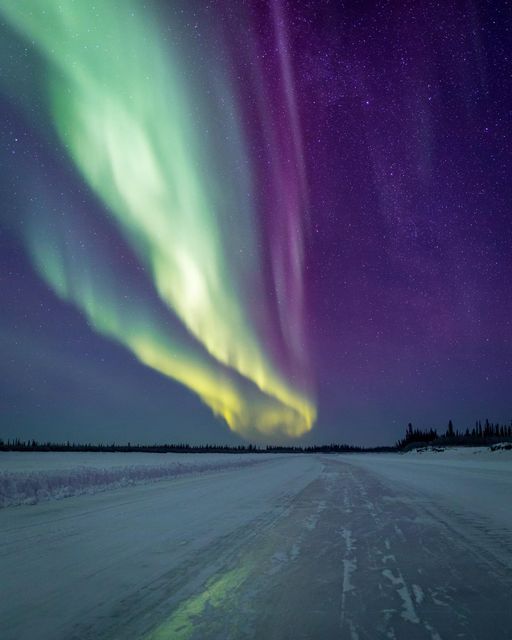
The lonesome Mackenzie River ice road beneath the Northern Lights
#Northern Lights#Aklavik#Mackenzie River#ice road#Arctic#remote#winter road#aurora borealis#Northwest Territories#mystical#tundra#permafrost#isolated#wilderness#NWT
111 notes
·
View notes
Video
DJI_0980 por Beto Pandiani
Via Flickr:
default
#flickr#artic#northwest territories#beluga#northwest passage#polar route#catamaran#nature#wales#leopold bay
33 notes
·
View notes
Text

Collapse of the Con Mine
27 notes
·
View notes
Text
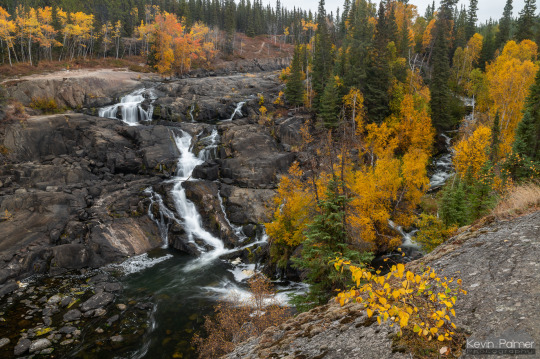

Cameron Falls, Northwest Territories
📸 by Kevin Palmer
#Cameron Falls#Northwest Territories#Kevin Palmer#Amazing#Beautiful#Waterfalls#Nature#Travel#Photography#Adventure
47 notes
·
View notes
Photo

Caribou and calf diorama at Prince of Wales Northern Heritage Centre, Yellowknife, NWT
#taxidermy#animal taxidermy#caribou#diorama#museum diorama#animal death#model making#scale model#northwest territories#tundra#fake flowers
81 notes
·
View notes
Photo

Inuvialuit man and woman, later identified by family as John Kallack and Angele Omiglok, with two children. Photograph taken in Kugluktuk (Coppermine), NWT. Verso reads “"Kalla, wife and family at Coppermine 1944-45."
L.A. Learmonth / Hudson’s Bay Company Archives
via Indigenous Archival Photo Project
121 notes
·
View notes
Text
The Northwest Territories government is promising residents, including youth and children, that they will continue to have access to gender-affirming care even if some services are no longer available in Alberta.
In a Monday press release, the territory’s Department of Health and Social Services said in cases where those services are not available in the NWT, health care providers can refer residents outside the territory. If a required service is not available in Alberta, the department said “alternative pathways for care” are in place elsewhere in Canada.
“All NWT residents have the right to respectful, dignified and culturally safe health care,” the release stated.
Full article
Tagging: @politicsofcanada
#cdnpoli#canada#canadian politics#canadian news#canadian#NWT#northwest territories#north-west territories#gender affirming care#gender affirming healthcare#healthcare
267 notes
·
View notes
Text

Mackenzie River Delta - Northwest Territories Canada
Harry Snowden
#photographers on tumblr#pnw#film photography#film#analog photography#nikon fe#35mm#kodachrome#arctic#Mackenzie river#canada#northwest territories#end of the world
21 notes
·
View notes
Text
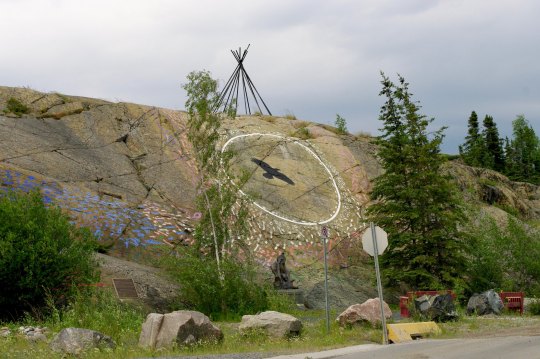


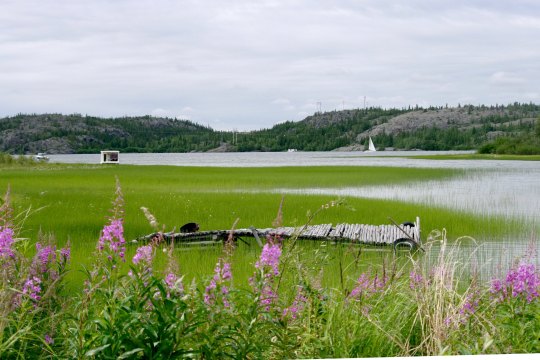
Yellowknife 2011 (2) (3) (4) by Doug Burba
Via Flickr:
(1) McAvoy Rock.
(2) Neighborhood watch.
(3) Sunday morning in Ndilo, a small Dene community located on the edge of Yellowknife on the tip of Latham Island. Yellowknife is in the background.
(4) Back Bay viewed from Latham Island.
14 notes
·
View notes
Text

Located on the north shore of Great Slave Lake, Yellowknife today is the territorial capital and largest city of the Northwest Territories of Canada. This is not the story of that city, but rather of what comes after.
(PA stands for Post-Anthropocene. It is not the system used by Directors for measuring time.)
1 PA
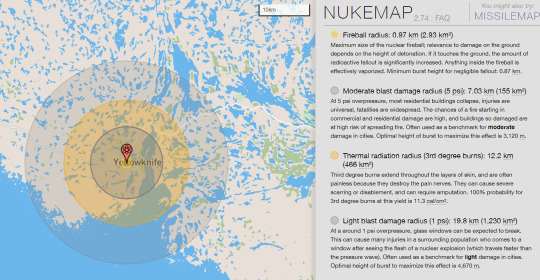
The city of Yellowknife, prior to the war, was growing at an exponential pace. Its stable climate, ample water supply, and the relocation of many important government functions eventually led to its population surpassing 200,000 by the time a one-megaton thermonuclear warhead, launched from western Gansu province, landed just south of its primary airport. The city's fairly compact layout, combined with the yield of the device, led to total devastation, the first days seeing the deaths of over half the city's residents.
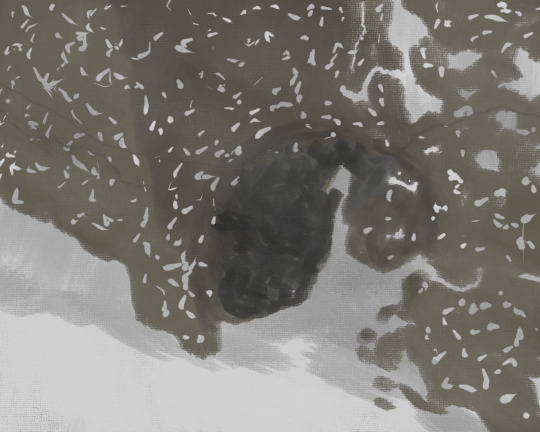
One year later, a global nuclear cooling effect has taken hold, and the charred ruins of Yellowknife lay empty. Some Human survivors remain on the outskirts, however the city as a whole is largely devoid of complex life. There are more survivors however, both Human and nonhuman, within the fallout radius, and elevated radiation levels will lead to increased rates of genetic mutation among the next generation. While typically leading to death or chronic illness in those impacted, among dwindling nearby Raven and Crow populations two mutations will actually prove mildly beneficial. A slight change in beak shape, and a growth abnormality in the right set of talons.
At a time when most edible plant and animal life is dead, and what remains is often small and burrowed, these chance mutations will forever alter the course of Earth's history.
1000 PA

Around this time, somewhere in Tierra Del Fuego, the last Human takes their final breath. While the effects of nuclear cooldown are long forgotten (at least at the superficial level), the destruction of nearly 80% of the ozone layer proved far more consequential in the long run. Even as industrial greenhouse gas emissions were suddenly and violently halted, the amount released by the firestorms that engulfed much of the Earth at the end of the Anthropocene led to further runaway warming, picking up around 20 PA.
By now only small pockets of large plant life remain, much of it in areas too hard-hit by the initial nuclear exchange for Humans to take advantage of before the end. Much of Earth's plant life is comparatively smaller, hardier shrubbery and root organisms that can survive drastic weather changes and high UV exposure. This is an improvement from the first 100 years, however, is a very difficult environment for land organisms much larger than coyotes to survive in.
Amidst the desolation, events unfold in the North American Arctic. With populations at a level that Humans would have long ago considered critically endangered, Crows and Ravens in this region, low on options, begin to crossbreed, leading to the first early "Directors". Still, without the caloric intake necessary, this new species remains, like its ancestors, at a level of only basic sapience for the time being.
100,000 PA
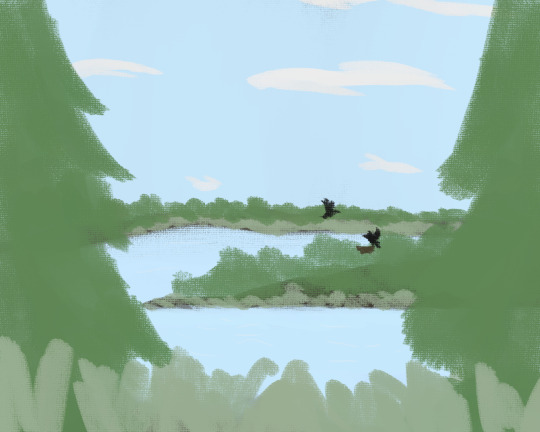
It's been 99,000 years or so since the death of the last Human, a little less since the hatching of the first members of a species that could vaguely be described as Directors. In that time, tool use, especially among those individuals, has diversified significantly. Use of large rocks to hunt creatures from the air, early harnessing of gathered fire, spears to reach deep into burrows, and stone shovels for digging out root plants. Still, the overall cognition of this species lacks certain important complexities.
Around this time, that is quickly changing. As the species has been psychologically driven for millennia to find, gather, and consume any food they come across on account of its sparse availability, the steady return of an ample food supply has led to the consumption of higher-than-necessary quantities. This, combined with improving tool use and the occasional harnessing of captured fire, will, given enough time, lead to the dawning of Earth's second technological society.
For now, however, the average life of a Director wouldn't look remarkably different from the life of any typical Crow or Raven of the present day. A few more tools, a little more complexity in communication and games, but all in all nothing that would get one whisked away to a research lab by today's Humans.
300,000 PA
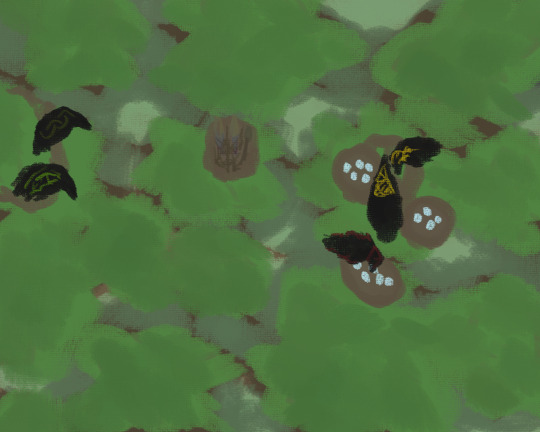
Amid the treetops, an endless expanse of wilderness stops only at the side of a fantastic lake. As winter ends, in rudimentary language a group of avians discuss an idea to help one another tend to their nests. Soon, most of the roost disperses, but a few members stay behind. Together they craft tools, collect food, make art, and otherwise watch out for one another.
It works out well.
It works out very well.
As the next winter comes around, more decide to join them.
The first permanent communities constructed by Directors are only as large as the surrounding environment permits, and in the warm season, most continue to break off into smaller family territories. Still, these year-round communities wait for them upon their return, and as they have for millions of years, prove vital in the exchange of information.
Each warm season the communities grow, and understandings of everything from food acquisition to the inner workings of nature grow with them. The first instances of selective breeding can be recorded in this time period, particularly among grasshopper species and, of all plants, sunflowers, an odd final "gift" from the last Human survivors in the region being their ample presence.
One year, a casual game causes sparks to erupt on the shoreline of the lake, the right stones dropped on top of one another from just the right altitude. It lights a small fire in nearby brush, which quickly goes out on its own.
400,000 PA

An ominous orange glow rises in the distance. Far from the permanent community, though if the winds change moving it won't be too difficult, at least at this time of year. They can always make a new one, and the controlled burn serves a purpose too important to not carry out. As Directors are too small to adequately clear land, at least on their own, a complex system of agroforestry has developed instead. This region's culture, now harboring one of the post-Anthropocene world's first new writing systems, uses it to manage forests and encourage the growth of edible plant life. Much of it involves introducing plant species selectively bred for nearly 100,000 years, to a point unrecognizable from its original form. Each year, on top of the tried and true, they tinker with new methods and record the results. All part of a more complex, more widespread ideology that has begun to blossom.
As a generalist species with fairly short lifespans, early Directors have a better sense of the cycles of life and death than early Humans and are more prone to consider the impacts of their actions outside of their own lifespan. Much more than us, they live on through their offspring. To an extent, this culture, like many others, believes in integration with nature rather than dominance.
Despite this, what is said is not always done, and language tends to focus more on avoiding annihilation rather than alteration, though the hypocrisy of some of these sentiments will become increasingly important as technology advances. For now, the first large communities have begun to pop up around these controlled burn sites, sedentary agricultural hubs, and rudimentary fisheries along the coast. They feature a one-level layout among the tree canopy, largely for waste management, with everything from basic trade workshops and artistry to storage areas, even archives or libraries in the largest communities. However, unlike early Human cities, these possess no leader, no monarch to give orders, and no currency.
This will become a running theme as Directors progress further into their development.
490,000 PA
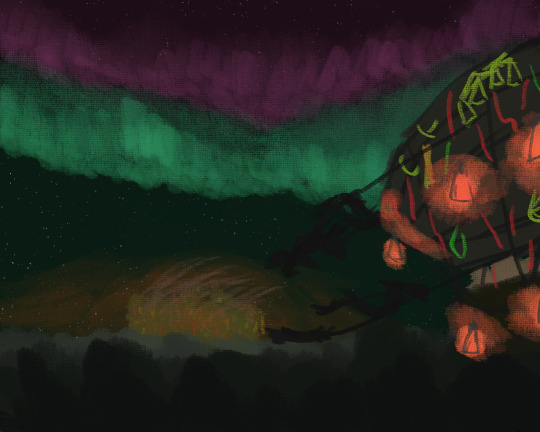
Is City of North Winds in the distance, a group of Directors works together to pull an early lighter-than-air craft. It carries a variety of items belonging to their rural community, now migrating to the city for easier access to food and resources amidst lowered global temperatures following an unknown volcanic eruption.
The city in the distance has a population of over two million, the largest city on Home at the time. Its most densely populated section has been under construction for thousands of years, trees selectively bred to grow taller and more resistant to flame, their branches sturdier, reaching high above the forest canopy. Recently developed bioluminescent lanterns seem to hang across every surface, and everything from tapestries and streamers to chimes and windmills adorn the exterior. Within the branches and cavernous clearings of this city, the region's culture blossoms, as does a (somewhat) new system of labor organization.
First originating on the Island of currently plentiful shrubbery, known in the Anthropocene as Baffin Island, the collective system arose in response to a need for accounting of who was doing what at any given time as the population grew. In order to do this, collectives were formed, loose groups of individuals coming together to complete needed tasks for a community. These groups were and continue to be open to join and leave as an individual wishes, with no structure or hierarchy within them save for systems of apprenticeship that were established as certain forms of labor complexified. It takes Is City of North Winds by storm, as although there is no force by which to drive people to personally adopt the system, the cold has everyone on edge.
More confined than usual, amidst the city's interior its residents watch as much of the livestock that couldn't be brought inside, some of it entirely immobile as a consequence of millennia of alteration, ends up succumbing to the extreme cold. Debate, long engaged in but seldom at a societal level, over the ethics of many of the selective breeding practices being engaged in begins to rage. It will lead to the three lakes' culture's slow disillusionment with many of their practices, which will take root, vanish, and reappear over hundreds of generations. It will take over 9,000 years for this undercurrent of discontent to finally be put to rest.
498,000 PA

In a smaller auditorium at the edge of the community, a crowd gathers before a group of travelers from far southeast. Outside, an already-operating windmill is wired to produce a small amount of energy, just enough to power three models of a strange new contraption. The audience is intrigued. While aesthetically displeasing, the increasing number of ways to harness this energy poses unique opportunities in dozens of fields, and the crowd can't help but speculate.
499,000 PA

Solstices ago, a research collective in the underground section of the city received a design for a device via mail. It comes once again from the southeast, where a thus far unwieldy technology has slowly become better understood in spite of limited general interest. Now, it bears fruit. The world's first electron microscopes in nearly 500,000 years, small towers compared to their operators. Within 200 years, laboratory gene editing will be commonplace. Within 500, society as they know it will be nearly unrecognizable.
500,000 PA

Night falls on Was, Is, and Shall Be City of North Winds. The glowing, immensely decorated mountain of sorts rises high above the forest canopy, surpassing even the monolithic posts of airship docks.
Society has changed in so many aspects over the past thousand years that it is somewhat pointless to try and list everything. Still, perhaps the most significant among these changes is what has occurred on the cultural level. To the residents of this community, and indeed to most of First Home's cultures, the development of direct genetic modification was a turning point beyond anything in the history of the configuration. Technologies that would have otherwise taken incredible spans of time to direct to fruition now took a few solstices. And, importantly, most could be done utilizing only stem cells.
As part of a wider societal craze, many ancient ethical debates had the equivalent of a sledgehammer taken to them as communities unified around a new goal, preached but not truly practiced by cultures since the beginning of their civilization. That goal, the recognition, and more importantly treatment of all complex life as being inherently equal to their own configuration, was perhaps finally within reach.
Far from the city, a grasshopper lands on a well-positioned sunflower, one of many that grow freely in the wilderness of the central north. They do not consider the balloon rockets departing in the west, or, at least not strongly, the nature of the airships passing in the distance. Still, it is because of their sacrifice that they fly, and now it is for them that they will continue.
#digital art#art#corvid#crow#climate change#raven#directors#director#this grand nest#first home#this took way longer than it should have#yellowknife#canada#northwest territories#forest#spec evo#spec bio#speculative zoology#speculative evolution#speculative biology#digital painting#writing#txt#scifi
35 notes
·
View notes
Text
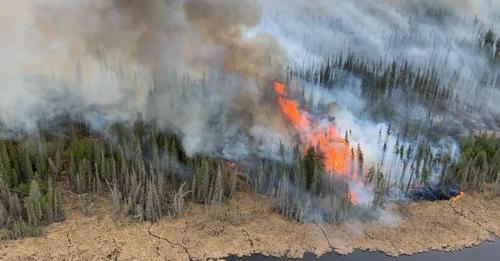
Though 18 indigenous families lost their homes, rain has finally come to northern Alberta. It's been called the worst fire season on record.
#Alberta wildfires#Hay River#Northwest Territories#evacuation#homeless families#forest fires#Canada#indigenous families#drought#climate change#heavy smoke#fire crews#NWT
73 notes
·
View notes

